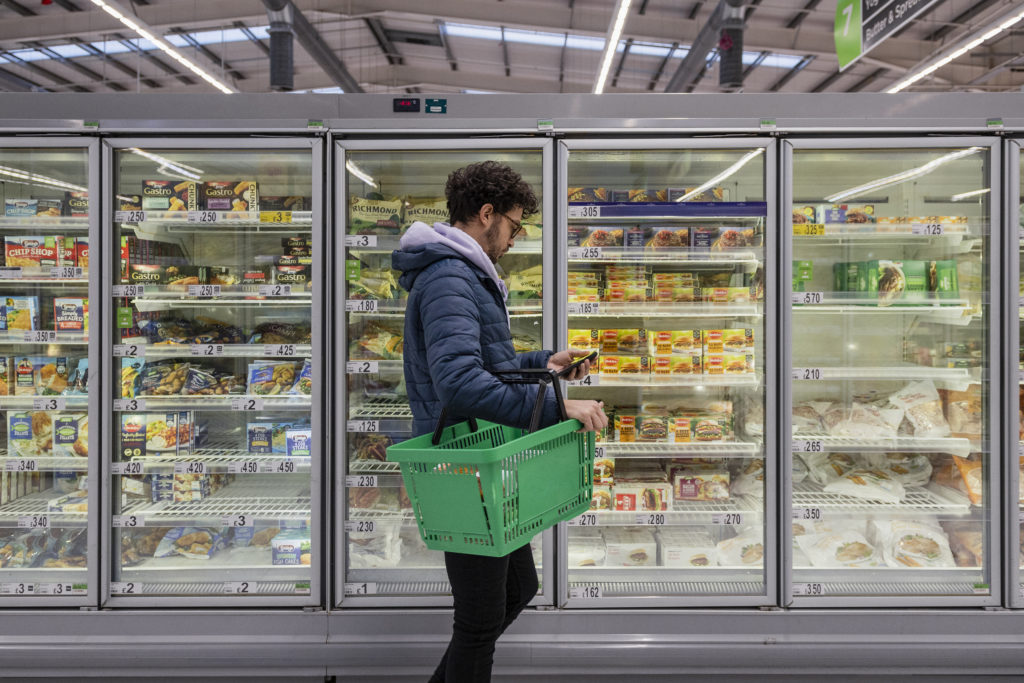
Grocery retailers face the daily challenge of providing a positive shopping experience while ensuring the safety of their employees and customers. According to data from the National Retail Federation, when taken as a percentage of total sales in 2021 the average shrink rate represented $94.5 billion in losses up from $90.8 billion in 2020.
While security issues are a concern for any business, retail grocery stores, supermarkets, and convenience stores are particularly vulnerable. For example, data from 2018 to 2020 compiled by the FBI show that grocery stores have experienced a 73% increase in aggravated assaults. In some cases, the rise in crime is attributed to organized retail crime, while others point to economic factors. Regardless of the cause, retail stores face unique physical security threats, including shoplifting, break-ins, checkout fraud, and vandalism.
With rising crime rates, retail stores are revising their operations, including changing store hours and focusing more on improving overall supermarket electronic security solutions. Fortunately, thanks to advances in technology and security integration, store owners and security professionals have access to various tools and solutions to help them strengthen their stores’ electronic security posture, protect their assets, and keep their employees and customers safe.
Security Risk for Grocery Retailers
Store managers around the nation are dealing with an increasing number of problems related to armed robberies and violence in stores. In the past five years, data from the Federal Bureau of Investigation (FBI) shows that aggravated attacks in restaurants increased by 60%, and those in grocery stores increased by 73%.
Shoplifters and violent criminals remain a significant challenge for traditional retail store operators—the average robbery cost retailers more than $7,500, a tremendous increase over the previous years.
As far as electronic security is concerned, grocery stores can mitigate risks by adopting a layered security approach.
Electronic Security Measures
When it comes to supermarket electronic security measures, decision makers want to maintain an open yet secure environment, a layered approach is often the most effective security approach. That’s because a layered approach uses five key security principles (Mitigate, Deter, Detect, Delay, and Respond) to strengthen a store’s electronic security posture.
For example, in the case of a large-format supermarket, it’s not just about catching the occasional shoplifter. Today’s physical security solutions allow store owners to integrate advanced video surveillance, access control, and perimeter security solutions to address evolving threats.
In order to mitigate interior security concerns, stores can adopt proactive measures by leveraging security technology that identifies potential threats and monitors activities in real-time.
Interior – Electronic Security for Inside Building
When describing the interior electronic security of a supermarket, we’re referring to the measures in place that prevent unauthorized access both during regular business hours and after hours. Perimeter security measures include locks, keys, access control, and other intrusion prevention measures. These measures help keep unauthorized people out and strengthen a store’s security 24/7.
At 3Sixty Integrated, we take a layered approach to security. Before we even begin to think about the latest security technology, we want to ensure that the business has a solid security foundation comprised of four fundamental elements:
- Access Control – All retail stores and supermarkets have areas that require strict access control to ensure that only authorized personnel have access. Access control measures can include: key cards, biometric authentication, touchless entry, and other cloud-based solutions.
- Video Surveillance – Surveillance systems serve a critical role in security, allowing business owners to monitor their facilities and detect threats before they occur. Video surveillance systems can be integrated with access control systems to provide a complete security solution.
- Intrusion Detection and Alarms – Intrusion detection systems (IDS) use video surveillance cameras, motion sensors, and alarms to monitor a business and serve as an early warning system. IDS can also be used to automate the management of access control and video surveillance systems.
- Critical Communication – Internal communication systems should be carefully designed to support the most critical communication needs. These include: emergency communication, such as the use of an alarm system to alert employees to a possible emergency; communication between internal systems and other systems, such as using a security management system to report an intrusion to the police; and communication with customers, such as providing a directory of stores and facilities to customers.
- Once these four layers are in place, we can begin to add more advanced interior security solutions such as facial recognition, shooter detection, and other security integration solutions that provide the best protection.
Perimeter – Electronic Security for Exterior Doors
The perimeter of a building is defined as the space outside the building but inside the fence line. For retail stores and supermarkets, perimeter security is vital to the overall security system. It protects the entrance to the store and is also the first line of defense against a potential break-in. Effective perimeter protection systems include:
- Ballistic-rated Doors – Doors are an important element of a comprehensive security design. When designed with site-specific criteria and installed properly, these doors provide both physical and psychological protection for the people and assets inside the building.
- One-touch Automatic Lockdown – The ability to lockdown a store quickly is an essential part of the perimeter security plan. A one-touch automatic lockdown allows for a quick response to a crisis and prevents further intrusion.
- Perimeter Weapon Detection Systems – Increasingly, many stores are using weapon detection technology to alert and deter weapons entering the premises. These systems are very effective in identifying threats in mass throughput scenarios, like a supermarket entrance.
- Facial Recognition – Supermarkets are using facial recognition technology to detect bad actors as well as administrative functions such as internal alerts and store operations. This technology can be integrated into a surveillance system that can monitor criminal activity.
- High-speed Overhead Doors – Moving towards the loading dock of a supermarket, high-speed overhead doors allow for quick ingress and egress of large trucks and emergency vehicles. They also feature strong materials to hold up against intrusion and adverse weather conditions.
Exterior – Electronic Security for Parking Lots
Outdoor parking lot security is an often-overlooked area of electronic security design that can dramatically improve the effectiveness of a supermarket’s security posture. Since more than 1 in 10 property crimes occurs in parking lots, it makes sense for grocery retailers to routinely evaluate and invest in their parking lot security measures.
Various security technologies exist that can be used in tandem with a robust loss prevention program to protect and strengthen a supermarket’s exterior parking lot security. Key measures include:
- Ensuring adequate lighting and signage.
- Perimeter fencing measures where possible.
- Environmental design protection such as landscaping to screen parking facilities.
While these measures will discourage criminals, they aren’t enough to completely stop crime from happening. For supermarkets, parking lot security needs to go well beyond simple deterrence. Increasingly store owners and security professionals are turning to advanced security technologies to help them protect their stores. These security solutions include:
- AI-enabled Surveillance – Security cameras are nothing new in the retail world, but AI-enabled surveillance is a relatively new technology that is becoming more common in the industry. The technology allows security cameras to alert security professionals, measure crowd density, and more.
- License Plate Recognition – In addition to AI-enabled surveillance, retailers are turning to license plate recognition to strengthen their parking lot security. Using the latest in AI technology, license plate recognition can scan a plate’s entire image, allowing retailers to identify suspicious individuals loitering around the store.
- Outdoor Weapons Detection Systems – Weapons detection remains a top priority for many retailers, and technologies such as shotspotter uses sophisticated acoustic sensors to detect, locate and alert law enforcement agencies and security personnel to gunshots which has proven effective in helping to reduce crime in retail environments.
- Drone Monitoring – The age of drones is here, and innovative security teams are using them to improve their monitoring capabilities. Drones can be used to monitor parking lots by comparing license plates to known offenders, thereby strengthening a store’s security awareness and response capabilities.
Retail Security Framework
Retailers may both reduce and prevent security incidents by combining essential security technologies such as access control, surveillance cameras, and weapons detection systems into a holistic system. In addition to technology, retailers can benefit from using a tried and true security framework to guide them through the process and ensure they have an optimal security system.
3Sixty Integrated designs and installs cost-effective retail store security solutions for stores of all sizes. With over 20 years of experience, we have become experts in the design, installation and maintenance of custom security solutions to keep your organization and assets safe and secure. Contact us today to discover how we can help your organization find the most effective security solutions.

